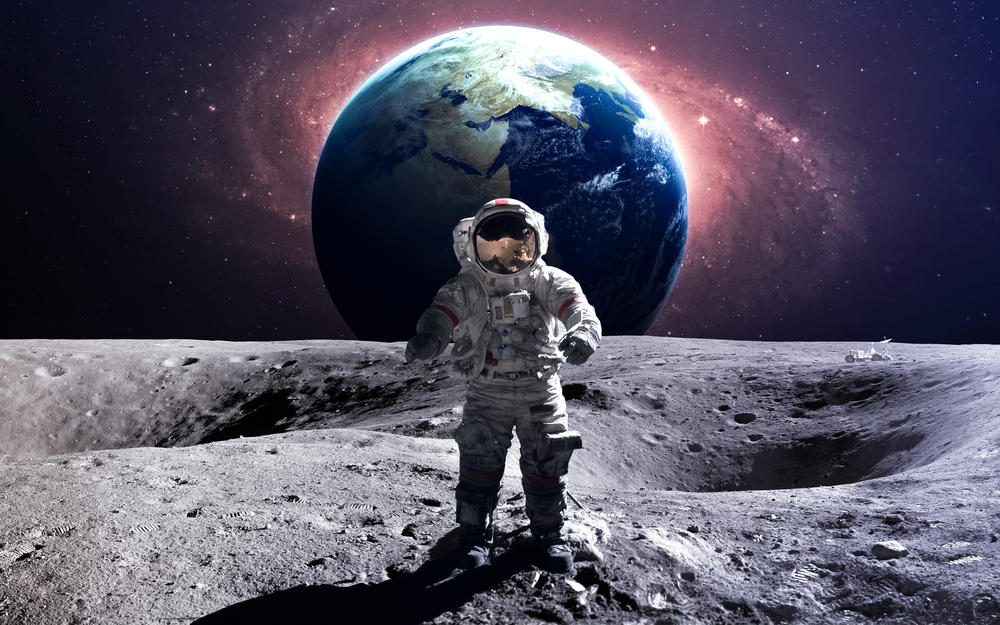For decades, the idea of traveling to the Moon was reserved for elite astronauts and science fiction stories. But today, space tourism is no longer a fantasy—it’s a rapidly emerging reality.
With companies like SpaceX, Blue Origin, and NASA making bold plans to send civilians beyond Earth’s orbit, becoming a Moon tourist is closer than ever. From private missions to lunar flybys, ordinary people may soon have the chance to explore the Moon in ways once thought impossible.
In this guide, we’ll break down exactly how you can prepare for a future trip to the Moon, step by step.
Stay Informed on Space Tourism

If you’re serious about becoming a Moon tourist, the first and most important step is to stay informed about the fast-changing world of space tourism. Leading companies like SpaceX, Blue Origin, Axiom Space, and NASA are continuously announcing new missions, training programs, and eligibility requirements. Subscribing to their official newsletters, following their social media accounts, and reading trusted space news sources (like Space.com, NASA.gov, and Ars Technica) will keep you updated on launch timelines and application opportunities.
Understanding which companies are offering lunar travel—and when—is crucial. Some programs may involve contests, public applications, or private invitations. Staying in the loop gives you a better chance to act quickly when a civilian mission opens for enrollment.
Understand the Cost of a Moon Trip
Traveling to the Moon is one of the most expensive experiences currently imaginable. As of now, the estimated cost for a private lunar mission can range from $100 million to over $1 billion per seat, depending on the provider and mission type. For example, SpaceX’s upcoming Starship lunar missions—such as the dearMoon Project—are privately funded ventures that may include civilian passengers at no personal cost, but access is extremely limited and often by invitation.
While prices remain high, experts believe costs will decrease over the next few decades as technology improves and commercial competition grows. In contrast, suborbital spaceflights with Virgin Galactic or Blue Origin currently cost between $250,000 to $500,000, offering a more affordable first step into space tourism—even if they don’t go to the Moon.
If you’re planning for the future, understanding the financial barrier now will help you prepare long-term, whether that means saving, investing, or seeking sponsorship.
Meet the Physical and Medical Requirements
Traveling to the Moon requires more than just a ticket — your body needs to be prepared for the challenges of space travel. Space agencies and private companies typically have strict physical and medical requirements to ensure passengers can safely handle the stresses of launch, microgravity, and re-entry.
You’ll need to be in good overall health, with no serious heart, lung, or neurological conditions. Many programs require comprehensive medical exams, including cardiovascular tests and mental health evaluations. Space travelers must also be able to handle intense G-forces during liftoff and landing.
Some companies may require participants to undergo preliminary training sessions or simulations to assess physical readiness. While you don’t need to be an astronaut, maintaining fitness and a healthy lifestyle is essential to meet these requirements.
Get Training for Space Travel
Before embarking on a Moon trip, space tourists need to undergo specialized training to prepare for the unique challenges of spaceflight. This training often includes sessions in simulators that mimic the sensations of launch, microgravity, and re-entry. You’ll learn how to move in zero gravity, manage your spacesuit, and handle emergency procedures.
Many companies offer pre-flight programs that include physical conditioning, space science briefings, and mental preparation. Training also covers how to live and work in confined spaces and how to communicate with mission control.
Although the training is less intense than that of professional astronauts, it is crucial to ensure safety and maximize the enjoyment of your lunar journey. Preparing mentally and physically helps reduce anxiety and equips you to fully experience the wonder of traveling to the Moon.
Apply or Get Invited to a Moon Mission
Once you’re prepared physically and mentally, the next step is to secure your spot on a Moon mission. Currently, most lunar trips are organized by private companies or government agencies, and seats are limited. Some missions, like SpaceX’s dearMoon Project, select participants through invitation or public applications, often prioritizing artists, scientists, and explorers who can share the experience with the world.
If you want to become a Moon tourist, keep an eye out for open applications, contests, or partnerships. Signing up for updates from space tourism companies and joining space enthusiast communities can increase your chances of being notified about opportunities.
Remember, while direct commercial lunar travel is rare now, the growing interest means more options will open up in the coming years. Being proactive and prepared is key to getting invited or accepted on one of these historic missions.
Prepare for Liftoff
As your Moon mission date approaches, it’s time to get ready for liftoff — both physically and mentally. Space travel is an intense experience that involves rigorous pre-flight checks, briefings, and final training sessions. You’ll likely undergo medical examinations and simulations to make sure you’re fully prepared.
Expect to spend time learning how to wear and operate your space suit, handle the spacecraft’s environment, and communicate with mission control. The launch itself involves powerful rocket engines producing extreme acceleration forces, so being mentally prepared for the sensations of takeoff and weightlessness is essential.
During the trip, you’ll experience microgravity, breathtaking views of Earth, and eventually, the Moon’s surface. Staying calm, following instructions, and maintaining good health throughout the journey will help make your lunar adventure safe and unforgettable.
Conclusion
Becoming a Moon tourist may sound like a dream reserved for astronauts, but with rapid advances in space technology, it’s becoming a real possibility for civilians. By staying informed, understanding the costs, meeting health requirements, completing training, and seizing the opportunity to apply or get invited, you can prepare yourself for this once-in-a-lifetime adventure.
While lunar travel is still in its early days, the future promises exciting possibilities—soon, ordinary people like you and me could be gazing back at Earth from the surface of the Moon. Keep dreaming, stay ready, and who knows? The next giant leap might just be yours.

Owen Samuel is a Destination Manager based in California, known for his expertise in creating unforgettable travel experiences. With a deep passion for tourism and local culture, he helps travelers discover the best places around the world.












